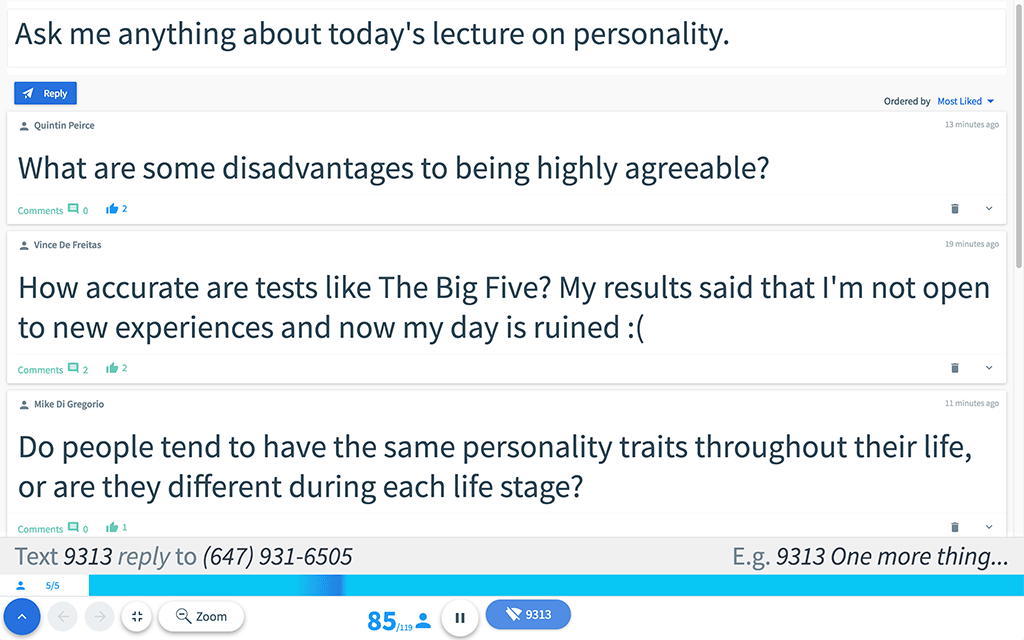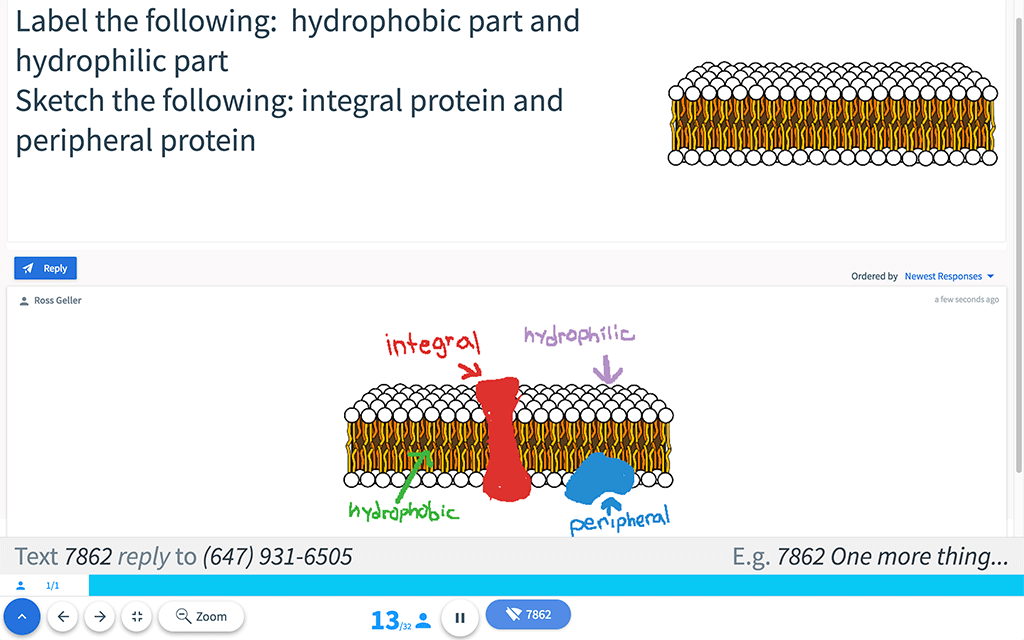In-class discussion forums sound good in theory, but in practice, they’re too often abandoned within your LMS as soon as the first thread is posted. With discussions in Top Hat Classroom, you can say goodbye to zero participation, and realize the potential of class discussion as an active, mobile in-class participation tool.
Discussions have all the features of forums—posts can have multiple comments, can be made for credit and be anonymous if necessary. But they also add more features, such as a clean mobile interface, real-time updates (great for an active class) and even allow drawings instead of words. Here are three ways to use the tool to make class discussion effective.

-
-
One minute essay
-
In this activity, you provide a discussion topic that reflects the material and students are asked to write responses in a specific timeframe. You might also know this as the Minute Paper, from Thomas A. Angelo and K. Patricia Cross. The character limit on discussions—5,000 characters, or about 250 words—is perfect for this purpose.
Encourage your students to write in a strprovost.tufts.edu/…/files/MinutePaper.pdfeam of consciousness style without worrying about correctness, grammar or re-reading. The point is for them to recall and reinterpret the material in their own words. Education expert James Lang suggests asking: “What question remains in your mind?” That way, “students have to decide where confusion or weaknesses remain in their own comprehension of the material.”
To this end, the Discussion tool allows you several different settings; for instance, you might choose to alter the anonymity settings so that students cannot see who wrote what. In some instances, you might even decide to just have the responses come directly to you and skip making them public entirely.
-
-
Respond with a drawing
-
Far from being gimmicky—and quite apart from the debate over whether different learning styles actually exist—asking students to submit drawings as a response can be an effective way of checking comprehension across several disciplines.
A math instructor can ask students to draw statistical distributions, for instance. Or budding electrical engineers can draw and identify the inputs and outputs of logic gates in series.
Furthermore, you also have the option to upload an image that students can draw on. This could be used to circle something on an image, complete a drawing, label axes or a combination of all of these.

-
Exit ticket
Before your students leave the class, ask them to respond to a question you set in their Discussion tab. This can be used as a way for students to consolidate and review concepts covered in the day’s lesson. Ask a simple question such as, “What would you like to know more about?” or “What’s the most interesting thing you learned today?”
For flipped classrooms, and/or classes in which there is a significant laboratory component where students can leave after they’ve completed their exercises, an exit ticket can add some important consistency and structure to the lesson. You can set the discussion topic when you’ve covered your main points and give credit for answering it (not necessarily for the content).
To read more about class discussions, take a look at these posts on our comprehensive knowledge base and support forum:
Interested in a personal tour of discussions in Top Hat Classroom and of Top Hat in general? Book a demo, at a time of your own choosing, with one of our representatives here.
See also
What are the newest trends in education?


